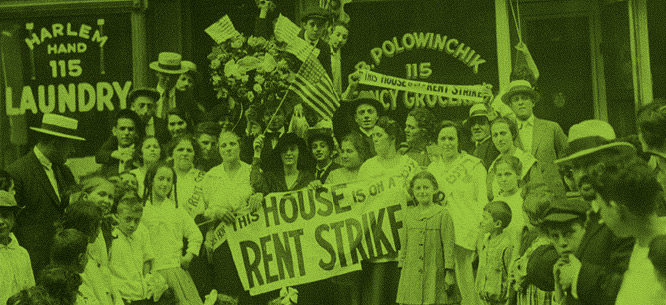Whose Family? Introducing Our Winter Issue
Whose Family? Introducing Our Winter Issue
Many mourn the end of marriage and the nuclear family, but if we want to fight inequality and improve life for parents, children, and the rest of us, we must look seriously at families as they exist today.

The last few decades have seen American families dissolve and transform. Americans are having a smaller number of children. Fewer people are getting married, and more couples are opting to live together before or instead of marriage. Last year the Supreme Court expanded access to this increasingly unpopular institution to same-sex couples.
These changes are not a sign of cultural decadence, as advocates for “family values” would have us believe (the phrase always raises the questions: whose family? And what values?). In many ways, these changes reflect decades of criticism by feminists and queer activists about the shortcomings of the nuclear family: that it restricts men and women to rigid models of how to be; that it places the burden of childrearing on women alone; that it is held up as the highest form of union but often offers little happiness.
But while families keep changing, not all Americans have equal power over their transformation. Sex, race, and class still influence the families people create. Wealthier women are more likely to get married before having children and are less likely to divorce. Black women in America are less likely to get married than white women, and if they do, they marry later. Those who blame single black mothers for being poor fail to recognize how high unemployment and incarceration rates disproportionately affect black families. Unmarried parents lose out on benefits, but their financial struggles are often blamed on their sex lives. Five million children in this country have had at least one parent in prison during their childhood, and unsurprisingly, the percentage for black kids is almost double that of white. And for the hundreds of thousands of queer youth who experience homelessness each year, the legalization of gay marriage has not meant a more accepting household. As all these examples suggest, to be married or to grow up in a two-parent household in the United States is less and less common—the old ideal is either undesirable or unattainable for most.
Political discussion often reduces the difficulties of parenting and relationships to questions of personal choice. Will you marry? Will you breastfeed? Public or private school? Will you go back to work or be a stay-at-home mom? But for most parents, there are hardly any choices at all. Compared to those in other wealthy countries, American parents receive little support from the state. The United States is one of only four countries in the world without any mandated paid leave for new parents (the others are Papua New Guinea, Swaziland, and Lesotho). Childcare is expensive—in many U.S. states, the average cost of care is well over $10,000 a year. Needless to say, it’s inaccessible for many.
Many mourn the end of marriage and the nuclear family, but clinging to a mythical, outdated model of family life is pointless. If we want to fight inequality and improve life for parents, children, and the rest of us, we must look seriously at families as they exist today.
In this section, we attempt to do just that. Today Social Security benefits are doled out much as they were in the 1930s, meaning the system rewards unequal marriages, and unmarried people get a raw deal. Suzanne Kahn argues that if we want true marriage equality, we should look back to the 1970s feminist activists who tried to change the gendered structure of marital benefits. Suggesting that future activists might be able to succeed where others have failed, Kahn asks, “If the social insurance system is built for a model of family that is rapidly disappearing, how long can it stand?”
Now that most mothers work, how do we compensate the people who look after their children? The childcare sector is growing, and parents are spending more money than ever on early education. But wages in the industry remain dismally low. Michelle Chen spoke with these workers, some mothers themselves, who are fighting for better pay and more time so they can afford to care for their own kids too.
Arlie Hochschild examines how the unfinished revolution for women’s equality has stalled in the public sphere. Contrary to the conservative belief that the free market encourages “family values,” Hochschild argues that stronger social services would do more to help families.
Sam Klug and Kathryn Joyce write about top-down attempts to solve problems based on an ideal of what the family should be, which ended up harming those it was meant to help. Klug, writing on the Moynihan Report fifty years after its publication, argues that its impact lingers in punitive policies that have destroyed many black families. Joyce reports on a disastrous attempt by evangelical Christians to end an exaggerated orphan crisis, and what happened when many adoptive families discovered their new children’s birth parents were alive.
How do we best support families in all of their evolving forms? Social services, such as paid leave and childcare, are necessary. In thinking about how families might thrive, in whatever form they take, we might also think about the burden of a workweek that grows ever longer and ever more unpredictable. Interminable work hours and changing schedules are making family life more and more difficult; those who claim to value families often put in place policies that don’t allow them to flourish. The right question isn’t “breastmilk or formula?” or “will the family survive?” but “how do we create a society where everyone has time to spend with those they love?”
Natasha Lewis is an associate editor at Dissent. Madeleine Schwartz is an editor-at-large at Dissent.






